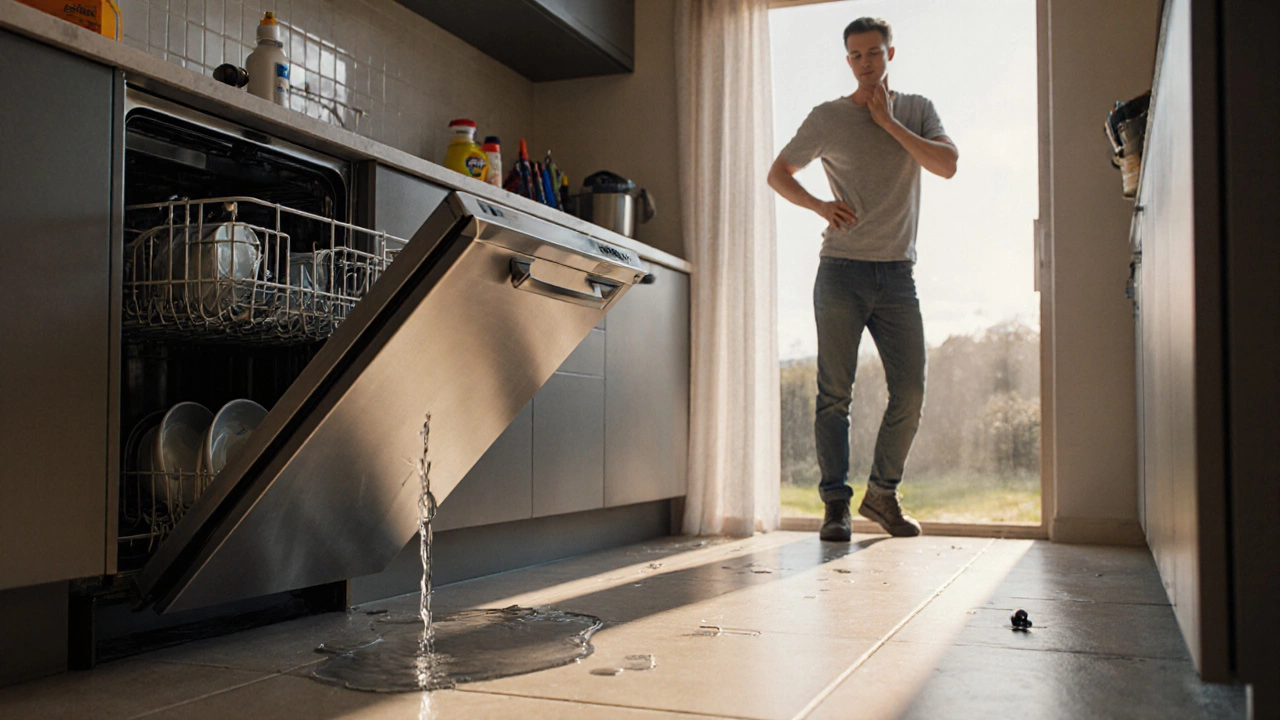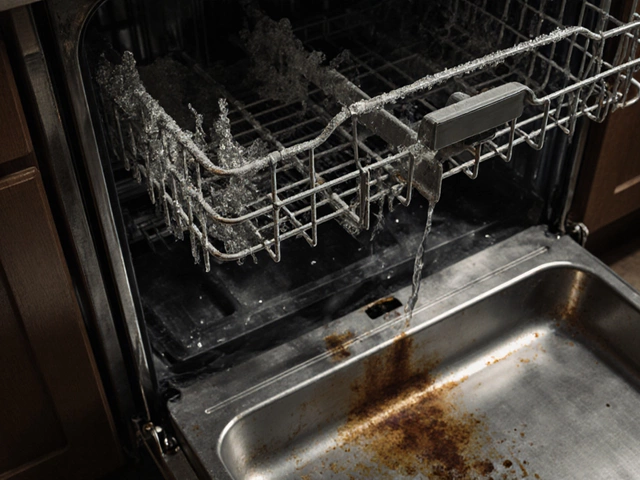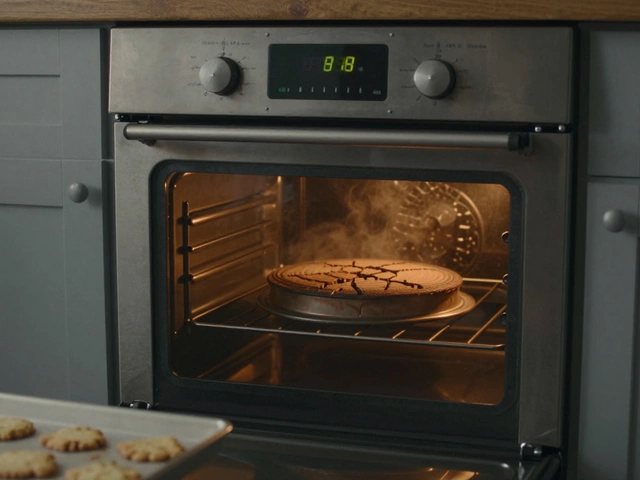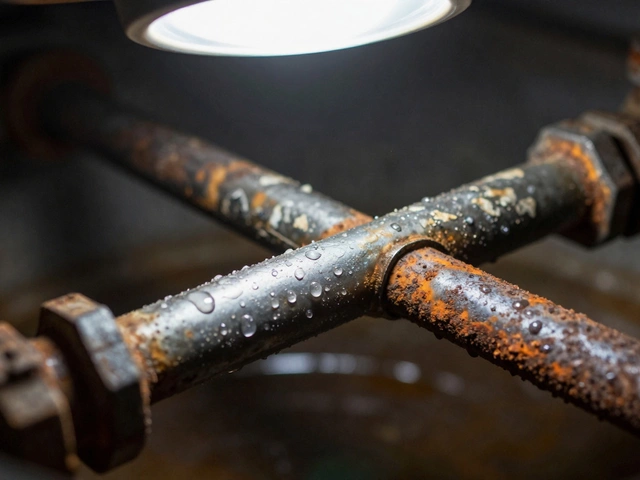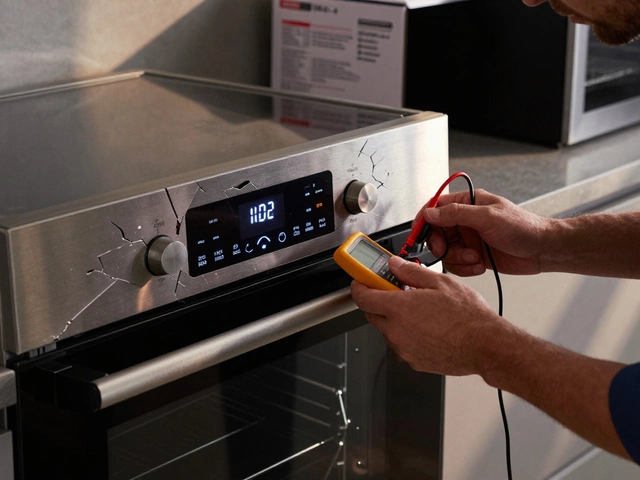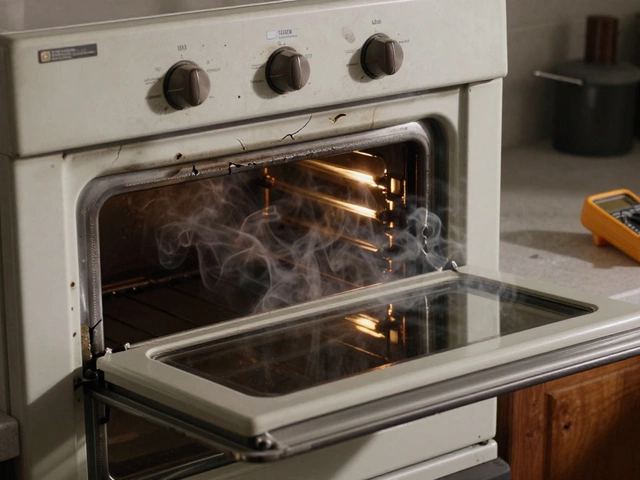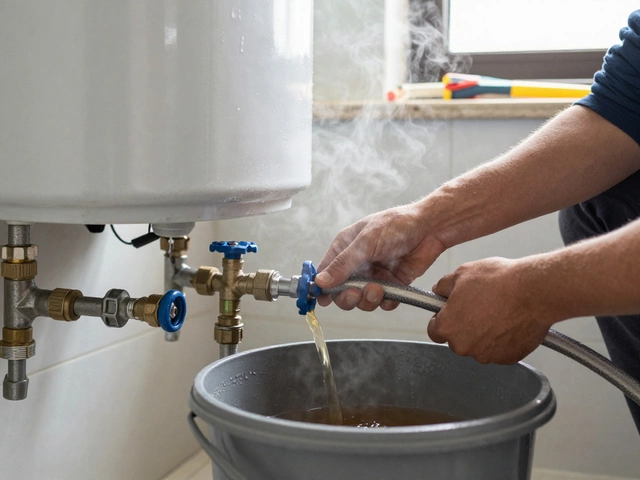Dishwasher Repair vs Replacement Calculator
Make Your Decision
Compare your repair estimate to 50% of a comparable new dishwasher price. If repair exceeds this threshold, replacement is typically recommended.
Imagine a dishwasher that’s been churning out clean plates for four years and suddenly starts leaking or refuses to start. You’re left wondering whether to call a technician, fix it yourself, or buy a new unit. Dishwasher is a built‑in or freestanding appliance that automates washing dishes using water, detergent, and heat-a staple in most modern kitchens. In 2024, the average New Zealand household spends about NZ$800 on a mid‑range dishwasher, so the repair decision can impact your budget for months.
Quick Takeaways
- Typical repair costs for a 4‑year‑old dishwasher range NZ$150‑NZ$350.
- Replacing the unit usually costs NZ$800‑NZ$1,200, plus installation.
- If the repair cost exceeds 50% of a comparable new model, replacement is often smarter.
- Energy‑efficient models can save NZ$50‑NZ$100 per year, influencing the long‑term ROI of a new purchase.
- Check warranty status, parts availability, and the age of major components before deciding.
Understanding Dishwasher Longevity
Most manufacturers rate dishwasher lifespans at 10‑12 years under normal use. However, actual longevity depends on three key factors: build quality, usage patterns, and maintenance. A high‑end stainless‑steel model often lasts longer because its interior resists corrosion and its motor is built for heavy duty can comfortably reach a decade, while a cheaper plastic‑cased unit may start showing wear after five years.
At four years, your dishwasher is still well within its expected service window. Most major components-such as the pump, heating element, and electronic control board-are designed to last 8‑10 years. That means a failure is more likely due to a single part malfunction rather than a systemic breakdown.
How to Assess Repair Viability
Before you pick up the phone, run a quick self‑diagnostic to gauge the problem’s scope. Here’s a simple checklist:
- Check power: Is the unit plugged in and the circuit breaker on?
- Inspect door latch: A faulty latch can prevent the cycle from starting.
- Listen for the pump: A humming sound may indicate a blocked or burnt‑out pump.
- Look for error codes: Many modern dishwashers flash a code on the panel that points to a specific fault.
- Examine water inlet: A clogged filter can cause low‑pressure errors.
If any of these steps reveal a clear, inexpensive fix (like cleaning a filter), you’ve likely saved yourself a service call. When the issue involves the motor, heating element, or electronic board, the next step is cost estimation.
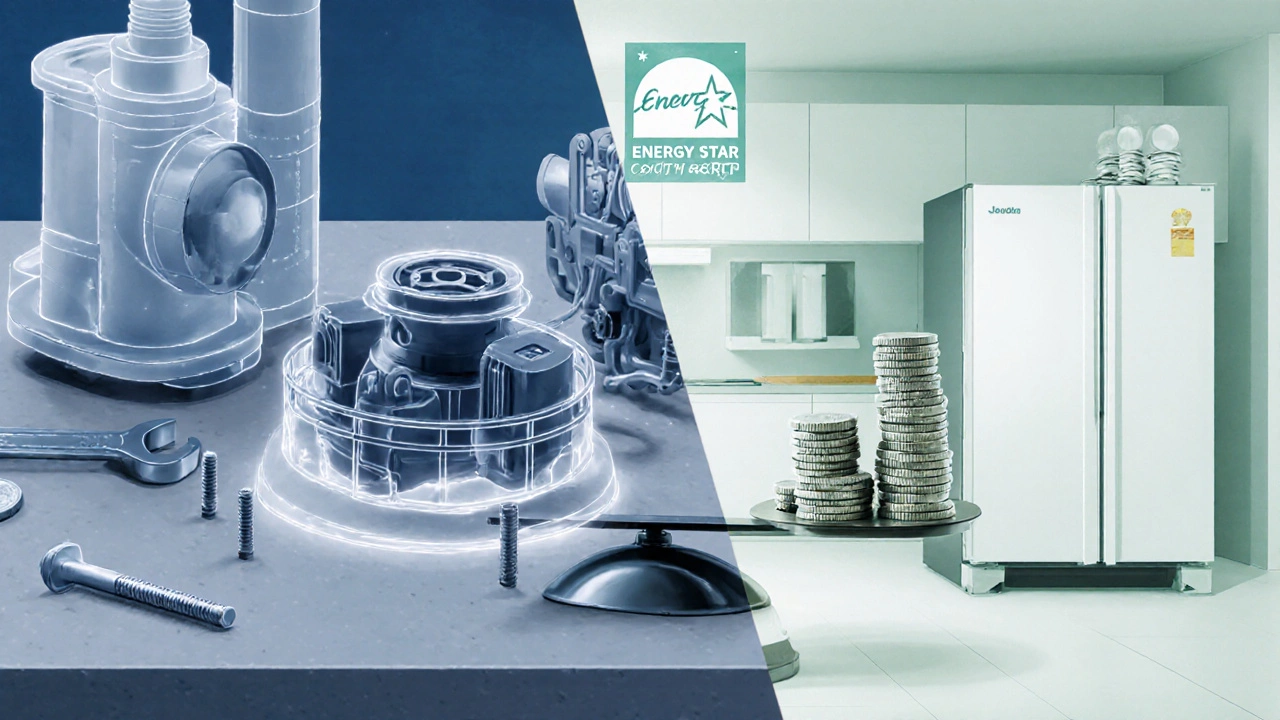
Cost Breakdown: Repair vs. Replacement
Below is a typical price comparison for a 4‑year‑old dishwasher in Wellington (values are averages from 2024‑2025 quotes):
| Scenario | Average Cost (NZ$) | Notes |
|---|---|---|
| Minor parts (e.g., door latch, filter) | 150‑200 | Usually fixed within 1‑2 hours; DIY possible. |
| Major part (pump, heating element) | 250‑350 | Professional labor adds ~NZ$100‑150. |
| Control board replacement | 400‑500 | Often the most expensive single part. |
| Full unit replacement (mid‑range) | 800‑1,200 | Includes delivery and installation. |
| Premium energy‑efficient model | 1,300‑1,800 | Higher upfront cost, but up to NZ$100/yr savings. |
As a rule of thumb, if the repair estimate exceeds half the price of a comparable new dishwasher, it’s time to replace. This “50‑percent rule” balances immediate expense against future reliability.
DIY Repair vs. Professional Service
Many owners attempt a DIY fix, especially for simple issues like a clogged spray arm or a loose door seal. The benefits are clear: lower labor cost and satisfaction of solving the problem yourself. However, DIY work carries risks:
- Safety: Electrical components can be hazardous if mishandled.
- Warranty voiding: Some manufacturers require a certified technician for certain parts.
- Parts availability: OEM parts may need a professional’s account to order.
If you lack basic electrical knowledge, hiring a professional technician who holds a licence for appliance repairs in New Zealand is safer. They can also perform a diagnostic that pinpoint the exact fault, saving you from guessing.

When Replacement Makes Sense
Beyond the cost formula, several scenarios tip the scales toward buying new:
- Frequent breakdowns: More than two major repairs in three years.
- Outdated energy rating: Older models may be rated 2‑star, while new ones hit 4‑star or higher.
- Missing parts: If the manufacturer has discontinued the model, parts may be scarce or overpriced.
- Space constraints: Newer designs offer slimmer doors, better rack flexibility, or integration with smart home systems.
In Wellington’s climate, a well‑insulated, energy‑efficient dishwasher can reduce hot‑water usage by up to 20 %, translating into noticeable utility savings.
Checklist Before You Decide
Print this short list and run through it when you’re faced with a faulty dishwasher:
- Identify the problem and get a rough cost estimate (DIY vs. professional).
- Compare that estimate to 50 % of a comparable new model.
- Check warranty status and whether the model is still supported.
- Consider energy efficiency and long‑term utility savings.
- Factor in the age of other major components (pump, motor) - if they’re halfway through their expected lifespan, replacement is wiser.
- Make a decision: repair, replace, or postpone (if the unit still works for most cycles).
Frequently Asked Questions
How long should a dishwasher last before it needs replacement?
Most dishwasher manufacturers rate their products for 10‑12 years of regular use. With proper maintenance, many units exceed this range, but significant component failures often appear after 8‑10 years.
What are the most common dishwasher problems in a four‑year‑old unit?
Typical issues include a faulty door latch, clogged spray arms, a worn pump, or a malfunctioning heating element. Error codes on the display panel usually point to one of these areas.
Is it safe to attempt DIY repairs on a dishwasher?
For simple tasks-cleaning filters, tightening a door seal, or replacing a spray arm-it’s generally safe if you disconnect the power and water supply first. For electrical or motor‑related problems, hiring a licensed technician is recommended.
How much can I expect to save with a new energy‑efficient dishwasher?
A modern 4‑star dishwasher can cut hot‑water use by 15‑20 % compared to a 2‑star model. Over a five‑year period, that translates to roughly NZ$250‑NZ$500 in utility savings, depending on usage.
What should I do if my dishwasher’s control board fails?
Control board failures are among the costliest repairs (NZ$400‑NZ$500). Because the part is often specific to the model, contact the manufacturer for a genuine replacement. If the price approaches 60 % of a new unit, consider replacement instead.
Bottom line: a four‑year‑old dishwasher is still in its prime, so a repair is often sensible if the cost stays under half the price of a comparable new model. Use the checklist, weigh energy savings, and factor in parts availability-then you’ll make a decision that protects both your wallet and your kitchen routine.

